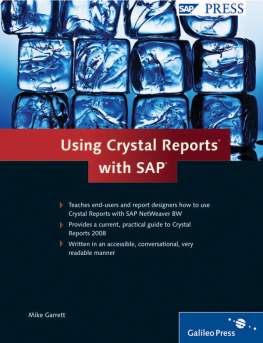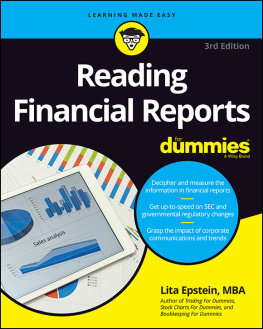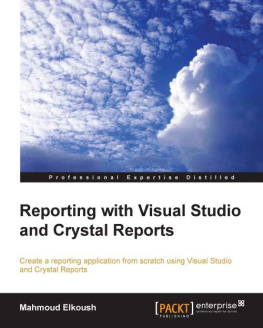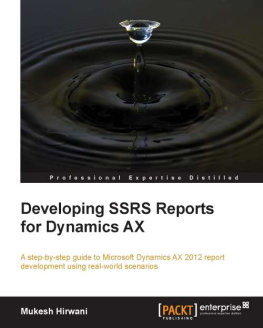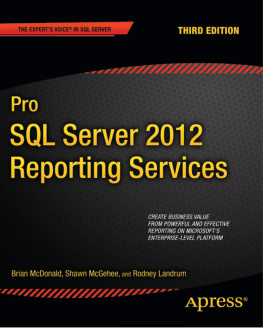
Table of Contents
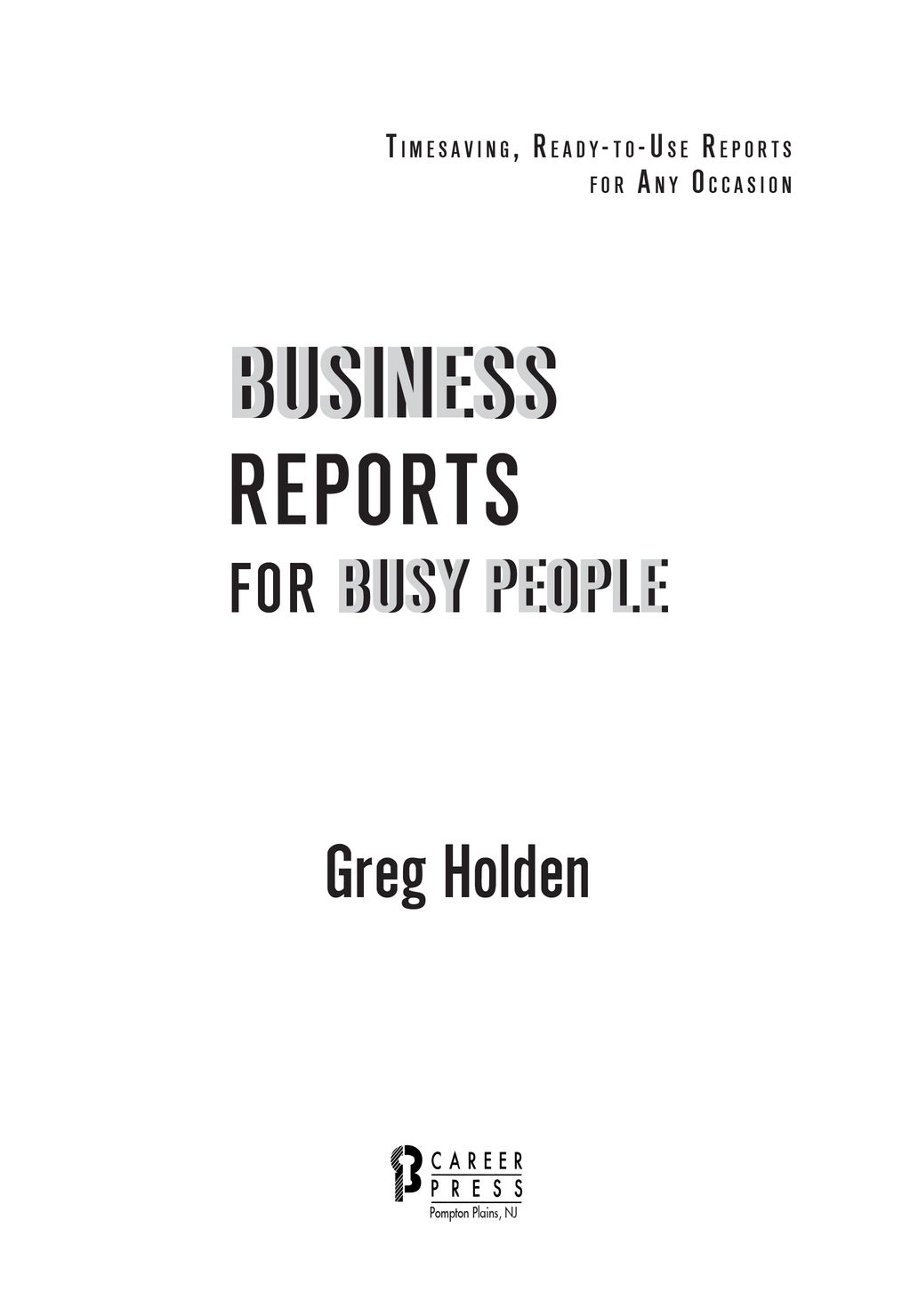
To Peggy
Acknowledgments
Many people take part in the creation of a book, and its impossible to acknowledge everyone who brings the work to print. However, I do want to acknowledge the help of those I was involved with personally. These include my longtime assistant and collaborator, Ann Lindner, and my agent, Neil Salkind, of Studio B Productions. I also wish to thank Michael Pye of Career Press, who got the project started, and Kirsten Dalley, who saw it to fruition.
INTRODUCTION
Business Reports for Busy People, as its name implies, is designed to be a practical source of information thats easy to find when youre trying to get through a hurried business day. When youre tasked with writing a business report and find yourself staring at an empty page, you need a jump-start to get you going. Each chapter contains a variety of jump-start material: an introduction that helps you focus on the goal and purpose of the report; step-by-step instructions for assembling the report, checklists, and ready-to-use reports and excerpts tailored to different types of businesses. The intent is to help you do your work better and more effectivelyright now.
Business Reports for Busy People is broken into nearly 30 chapters for a reason. I wanted to include as many different kinds of business reports as possible, to increase the chances that youll find one that fits the task at hand. At the same time, each chapter is packed with concrete information, useful techniques, and practical tips. That way, you can jump to the general type of report you want and still find the specific bits of advice you need.
I invite you to leaf through the book to find the data that applies to your own situation. Also keep in mind that each chapter is tabbed on the outside margins so you can quickly find the chapter you need first. Read the chapters that apply to your own business needs, because each chapter stands alone. Then flip through the book to find resources that apply to all business reports and that are likely to help you as well.
In the corporate world, business reports are regarded by many executives as an important benchmark in managerial success. Your ability to prepare a good report will not only help your organization, but it is likely to play a role in your ability to move up in the company or find a job if the need arises. Youll find this book helpful in learning to write an effective business report; read it, use it, and youll have a key to business success.
PART I
GETTING STARTED
Chapter 1
Essentials of Successful Business Reports
Business reports are challenging and frequently used tools for virtually any organization. Whether you work in the corporate world, in a nonprofit environment, or in education, you need to organize information and present it in a format that your colleagues or others find easy to understand and interpret. Your job is to focus and shape the information; you dont necessarily need to worry about tone, structure, or including standard elements; thats where this book will help you.
Business reports are far more challenging than business letters. Reports are by nature more complex and detailed, and often need to make a casethat the company is on budget, that a building project needs to be awarded to a certain contractor, or dozens of other reasons. Often, reports require supporting documentation, and the process of gathering and deciding how best to present the data can take a long time. But the basic elements and structure are similar, and ones with which you are probably familiar.
Considerations of a Business Report
Whenever you are faced with a business task of considerable sizeand many business reports can be lengthyit helps to break the task into separate components. As youll see in the chapters later in this book that are devoted to specific types of business reports, the contents themselves can be broken into separate sections such as an introduction, charts, and a conclusion.
The success of your report depends on whether or not you present well-focused and comprehensive content in a way that your audience can understand. Simply copying a previous report and inserting new figures or information wont work. Before you even start writing, a few preliminary steps will help you get started. The preliminaries can be broken into separate components. These include the audience, the general organizational plan for your report, and the writing style you are going to employ.
Identify Your Audience
The individuals who are going to read, analyze, and possibly make decisions based on your report will help you determine the length and detail of the contents. Take care in identifying exactly who is going to receive your report, and to analyze their communication needs as well. Ask yourself a few questions, and jot down the answers:
1. Who requested this report? (List the persons name and job title.)
2. What is this person/these persons expecting from your report? A recommendation? A detailed analysis? A comprehensive set of data?
3. How would you like the recipient(s) to respond after reading your report? With a specific decision? With conclusions will they communicate to the rest of the company?
4. What is the single most important piece of information you want to communicate in your report?
Managers are busy, and many only have the time to absorb a limited amount of information at once. Dont try to cover more ground than your readers want. The most important of these points of consideration is the last one: the most important piece of information you have to communicate. You may have many points to discuss, but be sure to get this one across first. Focusing your information and keeping your report as brief as possibletelling your readers only what they most need to knowis essential for effective business reporting.
Communicating With Higher-Ups
If your report is intended for your supervisors, or others who are higher in the organizational chain of command than you are, make sure you tactfully take into account the differences in your level of experience and background knowledge. Dont try to impress. Chances are your readers are able to draw their own conclusions about what you present. Simply being decisive and comprehensive, and summarizing the points you present will be enough. Then present your supporting information.
Communicating With Peers and Others
Just as you should avoid trying to impress your higher management, avoid talking down to those you supervise. Simply being clear and complete is enough. If you draw conclusions in your report, simply state them without issuing arbitrary orders.
If you are communicating with your peers, you can get into more technical detail than you would for other audiences, because you can be certain your readers will understand the subject at hand. If you are preparing a grant proposal or other report in which you are making a case for a project or for funding, however, you need to be a marketer as well as a reporter. After presenting your supporting information, you need to persuade your readers why they should fund your endeavor. Otherwise, when speaking to peers, its best to present the facts and draw reasonable conclusions without trying to be overly persuasive.
Next page




